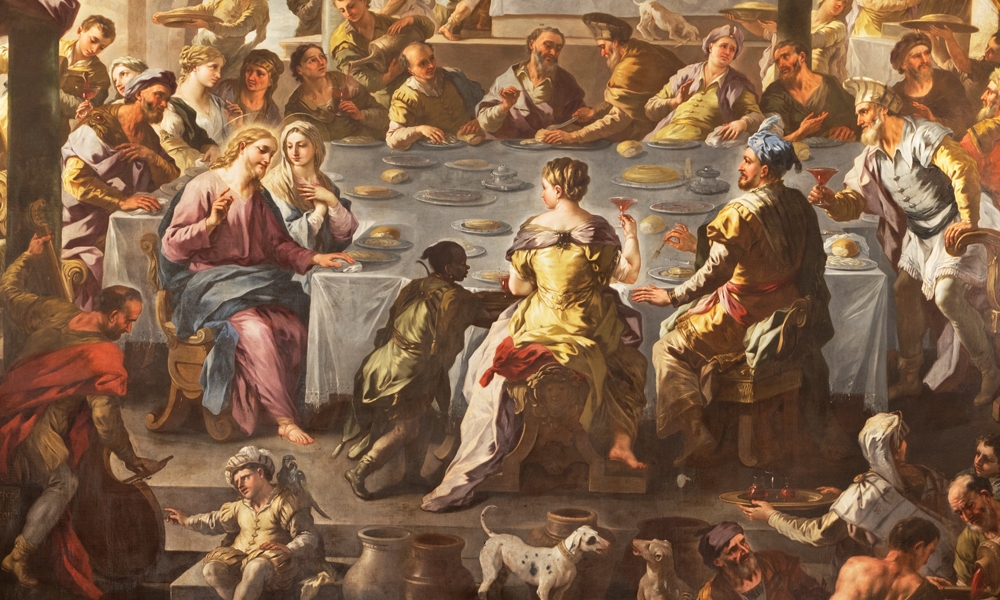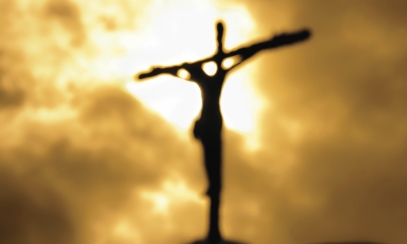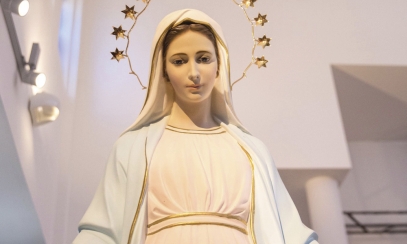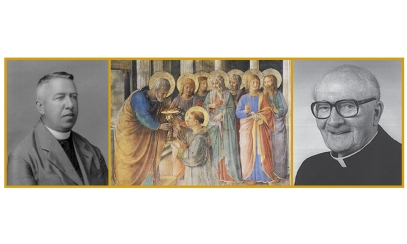
The Beauty of Christian Marriage
Closer to a priestly vocation than many realize
Closer to a priestly vocation than many realize
The entire Christian life bears the mark of the spousal love of Christ and the Church. (CCC 1617)
A priest getting up at 2 a.m. to offer the Anointing of the Sick to a person in the hospital can seem similar to a parent getting up in the middle of the night to offer milk to a newborn. If it were a film, the soundtrack for both scenes could be the same: “The Things We Do for Love.”
The entire Christian life bears the mark of the spousal love of Christ and the Church. (CCC 1617)
A priest getting up at 2 a.m. to offer the Anointing of the Sick to a person in the hospital can seem similar to a parent getting up in the middle of the night to offer milk to a newborn. If it were a film, the soundtrack for both scenes could be the same: “The Things We Do for Love.”
A beautiful teaching of the Catholic Church is that whether we receive Holy Communion only under the form of bread or only under the form of wine, we still receive the whole Christ, body, blood, soul and divinity. Thus, regarding the Holy Eucharist, there is one reality – the Risen Lord Jesus – who comes to us under two different forms: the bread and the wine.
This aspect of the Eucharist brings to mind marriage and the priesthood. These two vocations also involve a common reality that appears under different forms. Certainly, there are key differences between the two vocations. In the Latin Rite of the Catholic Church, priests are usually celibate, whereas married couples usually are not. Furthermore, through the sacrament of Holy Orders, priests are ordained to the ministerial priesthood, whereas married Christians and all the Christian laity receive the common priesthood at their baptism.
Christ, high priest and unique mediator, has made of the Church “a kingdom, priests for his God and Father.” The whole community of believers is, as such, priestly. The faithful exercise their baptismal priesthood through their participation, each according to his own vocation, in Christ's mission as priest, prophet, and king. Through the sacraments of Baptism and Confirmation the faithful are “consecrated to be ... a holy priesthood.” (CCC 1546)
The ministerial priesthood, on the other hand, differs in essence (in other words, it is fundamentally different) from the common priesthood of all the baptized; it is not merely a difference of degree:
The ministerial or hierarchical priesthood of bishops and priests, and the common priesthood of all the faithful participate, "each in its own proper way, in the one priesthood of Christ." While being "ordered one to another," they differ essentially. In what sense? While the common priesthood of the faithful is exercised by the unfolding of baptismal grace – a life of faith, hope, and charity, a life according to the Spirit – the ministerial priesthood is at the service of the common priesthood. It is directed at the unfolding of the baptismal grace of all Christians…. (CCC 1547)
So how exactly are Holy Matrimony and the ministerial priesthood similar? Drawing in part from St. John Paul II’s Theology of the Body, here are some of the most striking ways the reality of these two vocations is, to a great extent, the same:
Sacraments at the service of communion
Marriage and the ministerial priesthood serve the same goals: to foster loving communion with God and, as a fruit of this saving love, loving communion with others.
Baptism, Confirmation, and Eucharist are sacraments of Christian initiation. …Two other sacraments, Holy Orders and Matrimony, are directed towards the salvation of others; if they contribute as well to personal salvation, it is through service to others that they do so. They confer a particular mission in the Church and serve to build up the People of God. (CCC 1533-1534)
Thus, just as the forms of bread and wine in the Eucharist look different, but the core reality is the same, so too with the marital and priestly vocations. Both are called to a self-giving love that is at the service of others. In the case of a husband and wife, their selfless mutual love is aimed at helping each other become saints and get to heaven, along with their children if God blesses them with a family. In the case of priests, they are also called to this same kind of sacrificial love – agape love, as it is called in Greek. Their goal is to help the people they serve become saints and to get to heaven. Therefore, two different vocations but one essential reality: a life of self-giving love at the service of Christian communion.
Those who receive the sacrament of Holy Orders are consecrated in Christ's name “to feed the Church by the word and grace of God.” On their part, “Christian spouses are fortified and, as it were, consecrated for the duties and dignity of their state by a special sacrament. (CCC 1535)
It is no accident that these two vocations, marriage and the ministerial priesthood, are both at the service of communion. After all, the Holy Trinity itself is an eternal communion of persons. The communion of Trinitarian love is not only our destiny, but also our present reality. The Father, Son and Holy Spirit created us in their own image. We are therefore wired for communion, both in this life and the next. When the Church speaks about how the saints in heaven “see God face to face,” it is just a human way to indicate their loving communion with the Trinity. It is no wonder why, in his Litany of the Love of God, Pope Pius VI calls heaven “the country of pure love.”
“This is my body”
When a priest prays the words, “This is my body,” he is acting “in the person of Christ the Head” as the Lord’s living instrument. In truth, therefore, every parish bulletin could justifiably state that the chief presider at every Mass is not Father so-and-so, it is Jesus Christ, “the Great High Priest.” (Heb 4:14) We know that on the cross, this Great High Priest offered his body for our salvation. The previous evening, he had foretold this offering at history’s first Mass (the Last Supper), when he took the bread and prayed: “This is my body.” These are the very words, of course, that a priest prays at Mass during the consecration, when the bread is miraculously changed in substance to the Lord Jesus himself…the divine Bridegroom who offers himself to the Church, which Scripture refers to as his bride. (Eph 5:32)
In Holy Matrimony, each spouse also makes an offering of self to each other, including the offering of his or her body when the two become one flesh. Therefore, just as a priest is ordained, in large part, to be able to efficaciously pray at Mass the sacred, miracle-producing words of Christ, “This is my body,” so too a Christian spouse communicates these same sacred words in the marital embrace – an embrace that can also lead to a kind of “miracle”: the conception of a child whom God blesses with an immortal, spiritual soul in his own image.
The importance of forgiveness
By virtue of his ordination and the faculties given by his bishop, a priest has the sublime gift of being able to forgive people’s sins in the sacrament of Reconciliation. This too involves the priest acting “in the person of Christ the Head” as the Lord’s living instrument, since in this sacrament it is really the Lord Jesus forgiving sins through the ministry of the priest. No human being can forgive sins on his own accord; it is only God acting through the priest that absolves us of our sins. Some people claim that Catholicism is a religion of guilt. The opposite is true. The Catholic Faith is in fact the religion par excellence of liberation from our sins and guilt.
Any spouse will share that forgiveness is an essential dimension of a healthy marriage, even though neither spouse can absolve the other of their sins. The 1970 film Love Story was famous for the odd tagline, “Love means never having to say you're sorry.” Even John Lennon found this saying rather silly. The famous Beatle clarified that love actually means “having to say you're sorry every 15 minutes.”
The value of prayer
A life of communion with God is essential for both the marital and the priestly vocation. We cannot serve others with a godly love unless we have first received and experienced the extravagant love of God ourselves. A priest will burn out quickly if he stops praying. And the relationship of a married couple will eventually wither if it is not sustained by an intimate relationship with God. This “vital and personal relationship with the living and true God... is prayer.” (CCC 2558)



